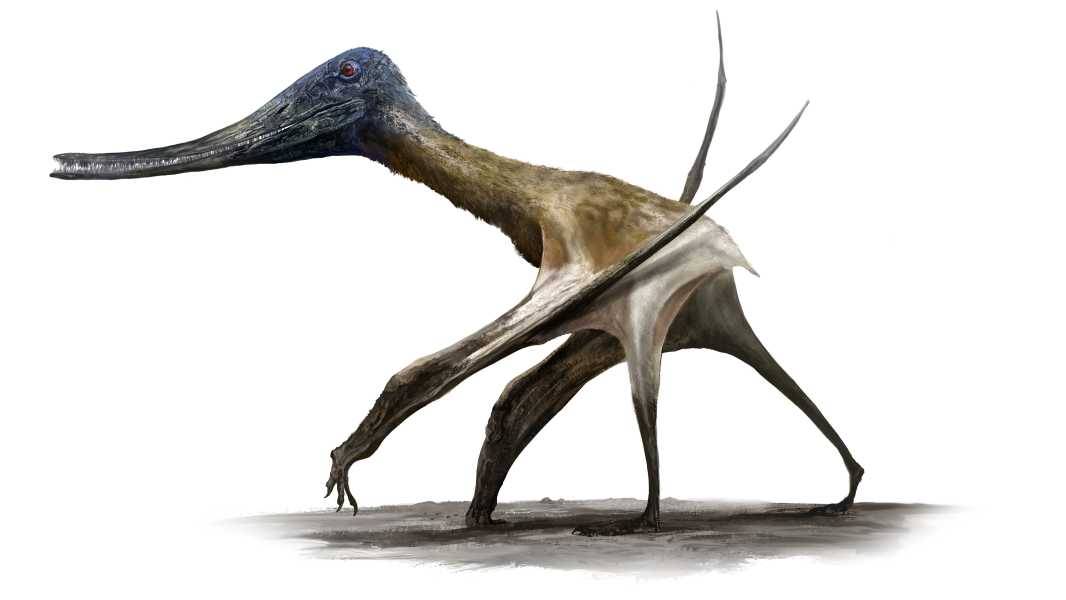
Pterosaur tracks, including those of the comb-jawed pterosaur Balaeongnathus, suggest that these creatures were comfortable on land. (Photo by Rudolf Hima)
A new study has found that ancient tracks show that many pterosaurs during the age of dinosaurs were equally comfortable on the ground and in the air.
Pterosaurs, commonly known as “pterodactyls,” were flying reptiles that ruled the skies when dinosaurs dominated the planet. However, new research has found that pterosaurs began to diversify in the mid-Jurassic period (201 to 145 million years ago) and evolved to move more efficiently on all fours, using both their arms and legs.
The study was published May 1 in the journal Current Biology and supports decades of paleontological evidence. The scientists also matched previously unidentified tracks to specific groups of pterosaurs, revealing new aspects of their lives.
“The tracks offer a unique opportunity to study pterosaurs in their natural environment,” said lead author Robert Smith, a research fellow at the University of Leicester in the UK. “They not only show where these creatures lived and how they moved, but also provide clues about their behaviour and daily activities in long-vanished ecosystems.”
Much of the research on pterosaurs has focused on their flight and diet. However, in recent decades, scientists have discovered numerous fossilized pterosaur tracks, which represent a unique and untapped resource, according to the study.
The problem with pterosaur tracks — or any fossils of extinct animals — is that it’s hard for researchers to determine which species or group made them. Fossilization is rare, and scientists don’t usually find bones and tracks next to each other because they fossilize in different conditions.
For the new study, the scientists created 3D models of pterosaur tracks and compared them to different pterosaur skeletons. They identified three distinct types of pterosaur tracks and associated them with three known groups: ctenochasmatoids, dsungaripterids, and neoazhdarchs. The neoazhdarch group included Quetzalcoatlus northropi, one of the largest pterosaurs — and the greatest flying creatures — to ever live.
According to the statement, the analysis showed that Neo-Azhdarchian tracks were found in both coastal and inland regions, suggesting that these animals were often on land and lived in similar conditions to dinosaurs.

Patrick PesterNavigate Social LinksPopular News Author
Patrick Pester is a well-known news writer for Live Science. His work has appeared on other science platforms such as BBC Science Focus and Scientific American. Patrick switched to journalism after working in zoos and wildlife conservation early in his career. He received a Master's Excellence Scholarship to study at Cardiff University
Sourse: www.livescience.com





